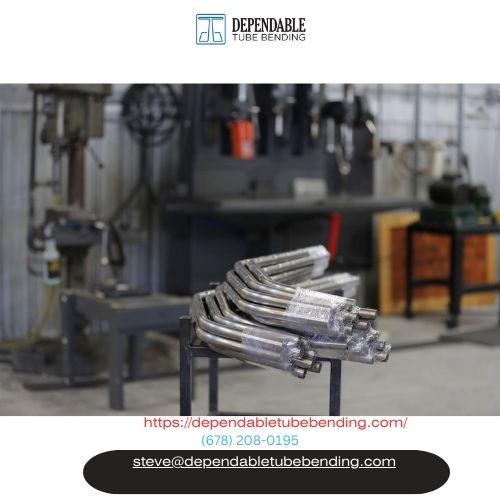
Metal tubes, with their versatility and strength, find application across industries, from intricate furniture designs to robust automotive frames. But how do these straight lengths transform into desired shapes? Tube bending, the art of permanently shaping tubes, holds the key. This guide delves into the world of metal tube bending, exploring its techniques, considerations, and applications.
Understanding the Bend: Types and Terminology
Form-bound vs. Freeform: Tube bending methods fall into two broad categories: form-bound and freeform. Form-bound methods utilize dies or mandrels to shape the tube into a specific profile. Freeform methods, on the other hand, offer more flexibility, allowing for custom bends without predefined shapes.
Bend Types: Bends come in various forms, each with its own advantages and limitations. Common types include:
- Angle bends: Simple bends with a specified angle at a single location.
- Radius bends: Smooth, curved sections with a specific bend radius.
- Return bends: Two consecutive bends in opposite directions, forming a U-shape.
- Offset bends: Bends located away from the tube end, creating a “dog-leg” shape.
- Multiple bends: Complex shapes achieved by combining various bend types.
Bend Characteristics: Beyond the bend type, other crucial aspects to consider include:
- Bend angle: The degree of deflection at the bend, usually measured from the outside bend.
- Bend radius: The distance from the bend centerline to the outer edge of the tube.
- Wall thickness: The thickness of the tube material, impacting bendability and potential issues like thinning.
- Material properties: Different metals have varying bendability, springback (tendency to return slightly after bending), and weld seam considerations.
The Tools of the Trade: Bending Methods Explored
Manual Bending: For low-volume applications or limited budgets, manual bending with hand tools like tube benders, spring benders, and fill-sand methods offer a basic solution. However, these methods often lack precision and consistency.
Hydraulic Bending: For higher production volumes and tighter tolerances, hydraulic bending machines deliver accurate and repeatable bends. Various models cater to different tube sizes and materials, employing dies and mandrels for precise shaping.
CNC Bending: Computer Numerical Controlled (CNC) bending machines represent the pinnacle of precision and control. By programming the desired bend parameters, manufacturers achieve complex bends with exceptional accuracy and consistency, ideal for high-volume, automated production.
Rotary Draw Bending: This specialized technique utilizes a rotating die and draw arm to pull the tube around the die, resulting in smooth, high-quality bends with minimal wall thinning. Often used for thin-walled tubes and intricate shapes.
Roll Bending: Ideal for large-diameter tubes and large bend radii, roll bending employs multiple rollers to gradually bend the tube into the desired shape. This method offers high production rates but may not be suitable for tight bends or complex shapes.
Considerations for the Perfect Bend: Safety and Best Practices
- Material selection: Choosing the right metal for the application is crucial, considering bendability, strength, and corrosion resistance.
- Lubrication: Proper lubrication minimizes friction and reduces wear on both the tube and machine tools.
- Heat treatment: Certain materials or complex bends may require preheating or post-heating to ensure bendability and prevent cracking.
- Springback compensation: Accounting for springback, the tendency of the tube to slightly straighten after bending, is essential for achieving accurate final shapes.
- Safety precautions: Always wear appropriate personal protective equipment (PPE) while operating tube bending machines and follow safety guidelines to prevent accidents.
Bending the World: Diverse Applications of Tube Bending
Tube bending plays a vital role in various industries, shaping components such as:
- Automotive frames and exhaust systems
- Furniture frames and decorative accents
- HVAC ductwork and plumbing systems
- Medical equipment and prosthetics
- Aerospace components and aircraft frames
- Heat exchangers and oil pipelines
The versatility of tube bending allows for innovative designs and efficient solutions across countless applications.
Conclusion: Bending Toward the Future
Metal tube bending, with its diverse techniques and constant advancements, remains a crucial pillar in manufacturing and fabrication. As technology evolves, even more sophisticated and efficient bending methods are emerging, pushing the boundaries of what’s possible with metal tubes. From intricate medical devices to robust engineering structures, the ability to bend metal to our will continues to shape the world around us.
Source Url:- https://shorturl.at/gnuGP
For More Info:- steel pipe bending near me | what is tube bending | bending tubes